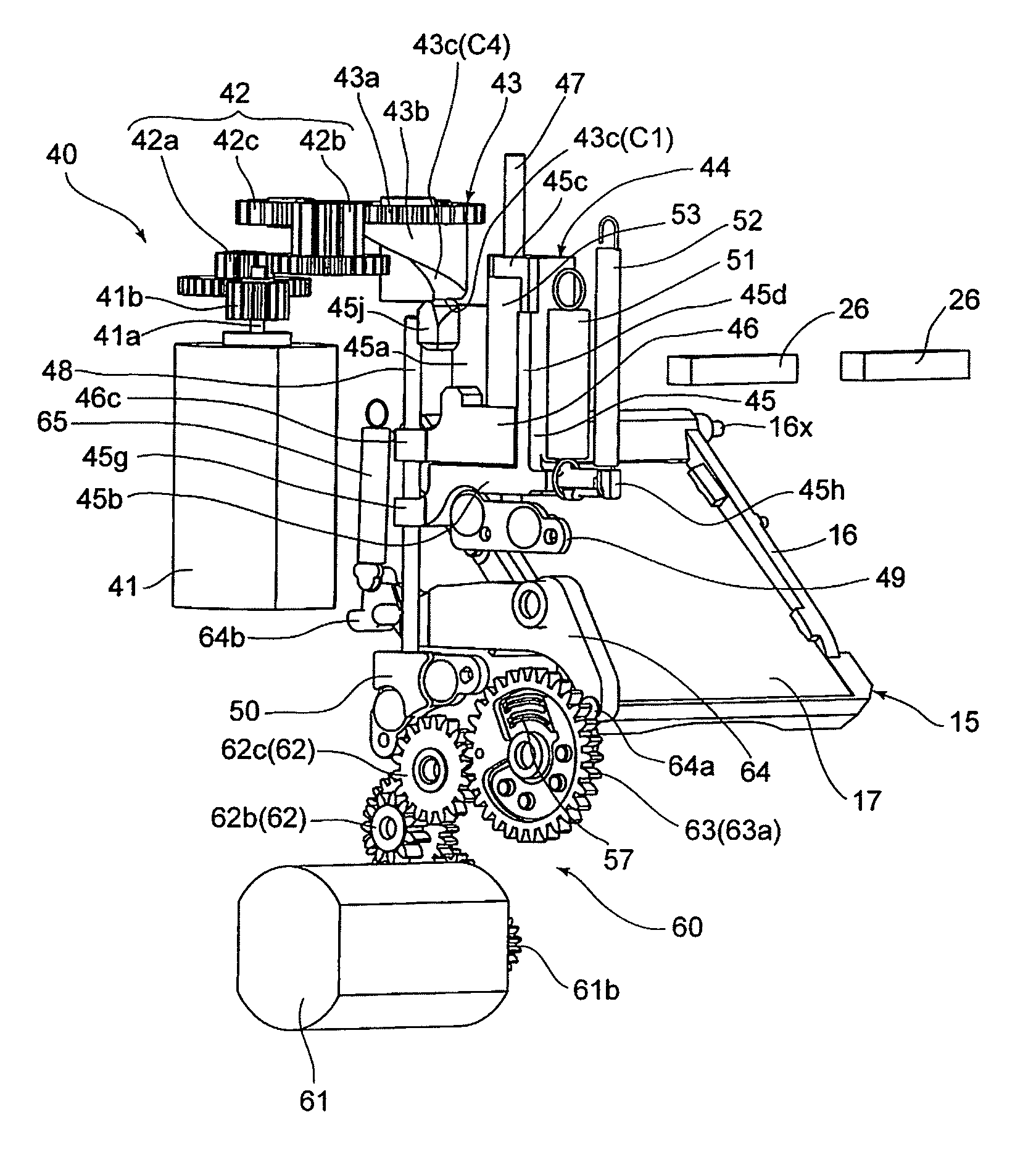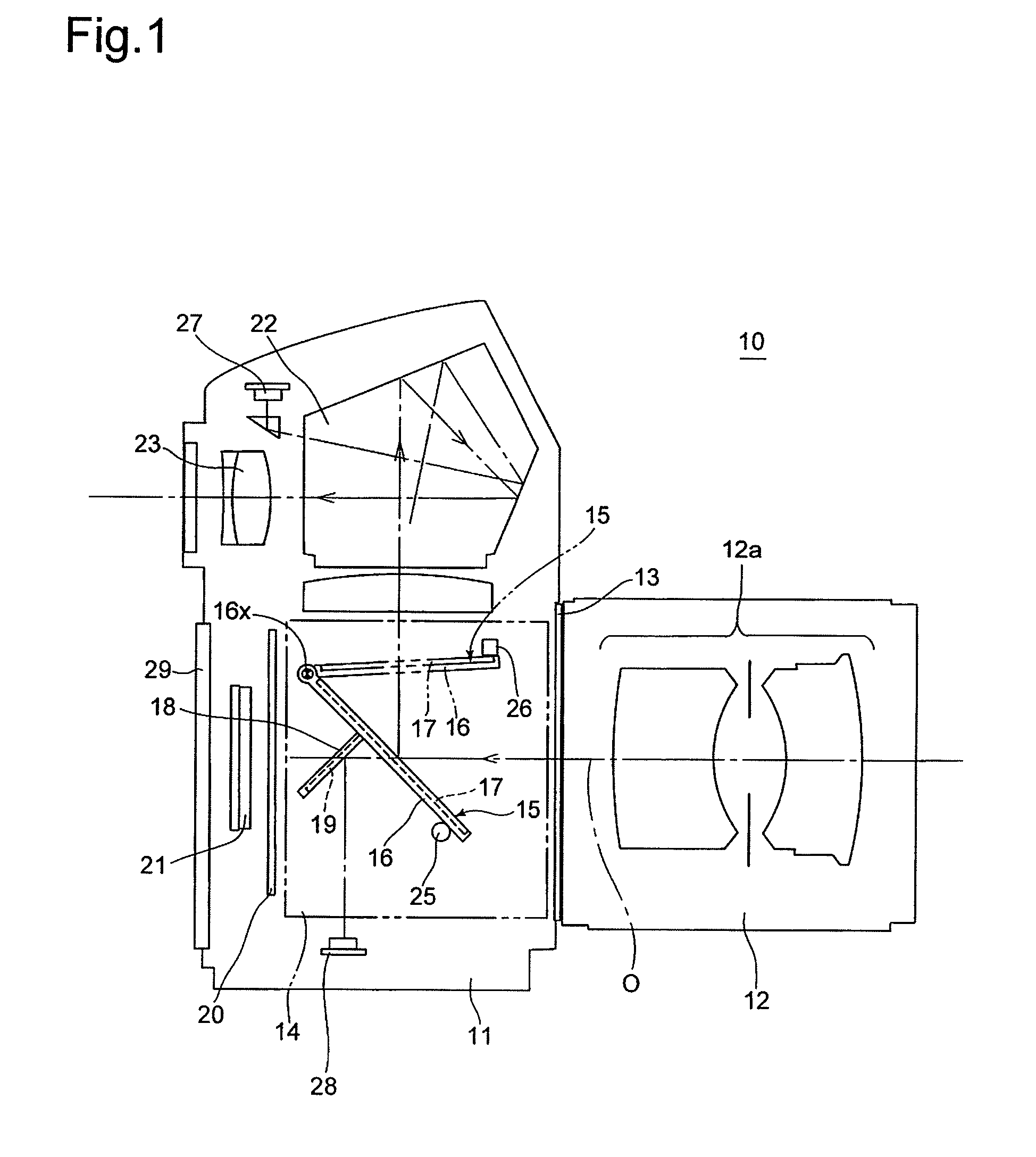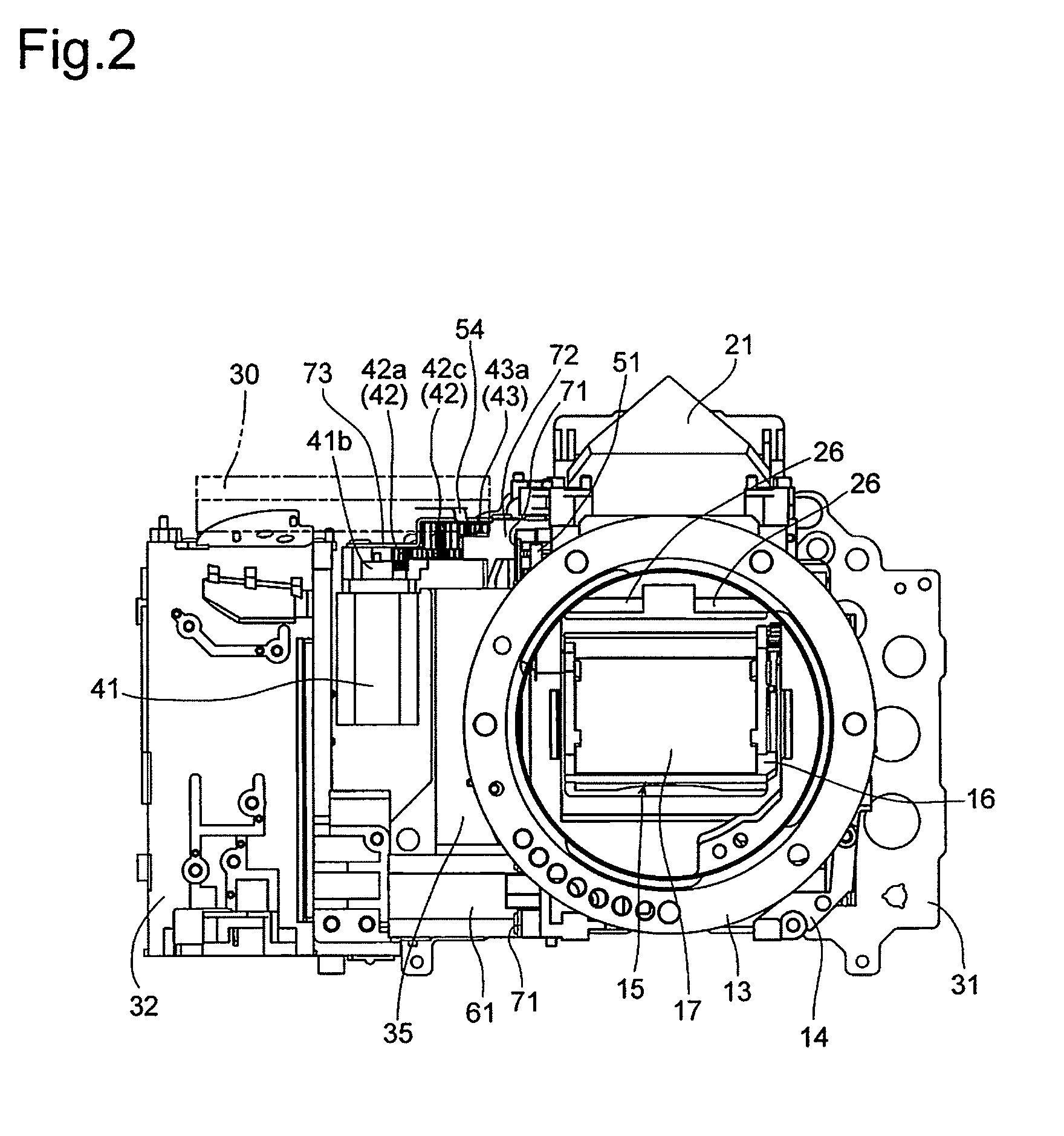Camera, control apparatus for cam drive mechanism and control method for cam drive mechanism
a control apparatus and cam drive technology, applied in the direction of motor/generator/converter stopper, ac motor stopper, instruments, etc., can solve the problems of limiting the lateral (widthwise) direction of the camera, the possibility of shock acting on the driven system becoming great, and the limitation of the increase of the photographing frame speed
- Summary
- Abstract
- Description
- Claims
- Application Information
AI Technical Summary
Benefits of technology
Problems solved by technology
Method used
Image
Examples
Embodiment Construction
[0065]The present invention will be described below with reference to two SLR camera embodiments. FIG. 1 shows an SLR camera (hereinafter referred simply to as camera) 10 which is provided with an optical system which is common in the two embodiments of the SLR cameras. The camera 10 is provided on the front of a camera body 11 with a lens mount 13, to which an interchangeable lens 12 is detachably attached. The camera 10 is provided, in the camera body 11 behind the lens mount 13, with a mirror box 14. The camera body 11 is provided inside the mirror box 14 with a movable mirror (quick-return mirror) 15. The movable mirror 15 is provided with a main mirror 17 and a sub-mirror 19. The movable mirror 15 is constructed so that the main mirror 17 and the sub-mirror 19 are fixedly supported on a main-mirror holding frame (movable-mirror holding member / mirror seat) 16 and a sub-mirror holding frame 18, respectively, and that the sub-mirror holding frame 18 is positioned behind the main-m...
PUM
 Login to View More
Login to View More Abstract
Description
Claims
Application Information
 Login to View More
Login to View More - R&D
- Intellectual Property
- Life Sciences
- Materials
- Tech Scout
- Unparalleled Data Quality
- Higher Quality Content
- 60% Fewer Hallucinations
Browse by: Latest US Patents, China's latest patents, Technical Efficacy Thesaurus, Application Domain, Technology Topic, Popular Technical Reports.
© 2025 PatSnap. All rights reserved.Legal|Privacy policy|Modern Slavery Act Transparency Statement|Sitemap|About US| Contact US: help@patsnap.com



